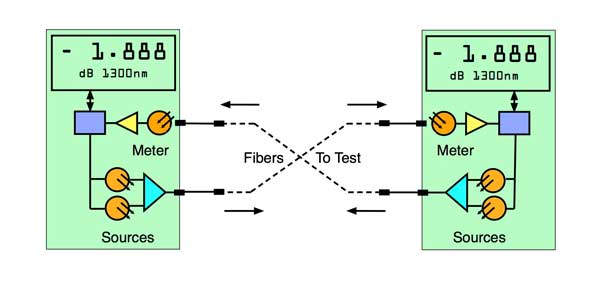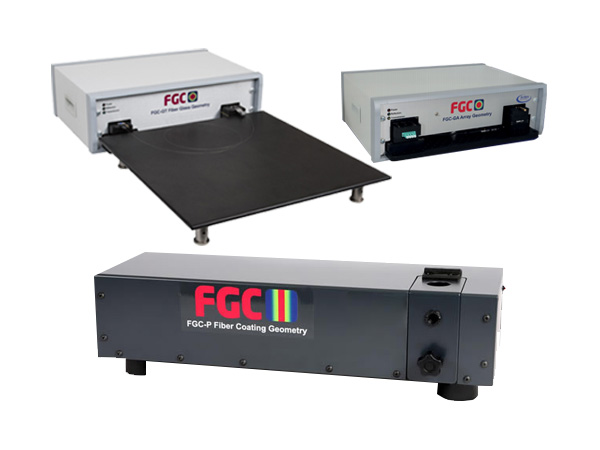Industry Standards Met by Optical Fibre Diameter Analyser Systems
Wiki Article
Optimize Your Fiber Optic Performance: Comprehending Optical Fibre Diameter Analyser Technology
The performance of fibre optic systems is seriously influenced by the precision of their diameter, an element typically ignored in the search of ideal signal integrity. Understanding the technology behind optical fiber size analysers discloses the elaborate equilibrium in between measurement accuracy and manufacturing high quality. These tools not only improve compliance with sector standards but additionally provide real-time insights that can preemptively deal with potential concerns. Nevertheless, the implications of their use extend past plain dimension; they can essentially modify the landscape of fibre optic effectiveness. What variables should one take into consideration to harness their full potential?Significance of Optical Fibre Size
The diameter of optical fiber plays an important function in figuring out the efficiency and effectiveness of interaction systems. Alternatively, smaller diameters have a tendency to sustain fewer settings, which can boost signal clarity and reduce crosstalk.
Additionally, understanding the diameter's implications can result in set you back savings by lowering the demand for signal amplification and repeaters in extensive networks (optical fibre diameter analyser). Finally, the significance of optical fibre size can not be overstated, as it directly influences the overall performance and dependability of modern-day interaction systems

How Diameter Affects Signal Quality
Signal quality in optical fibre systems hinges dramatically on the diameter of the fibre. A smaller sized size can lead to higher attenuation rates, resulting in signal loss as light journeys via the fibre.Conversely, larger sizes generally allow for improved light capture and lowered modal dispersion, boosting signal clarity. In multimode fibres, a bigger core size can sustain numerous light settings, but it might likewise introduce intermodal diffusion, which can break down signal high quality. Selecting the ideal fibre diameter is important for attaining the preferred efficiency in certain applications.
Furthermore, the interaction in between the fibre size and the wavelength of the light used plays an essential role in determining the efficient transmission distance and overall signal honesty. Therefore, comprehending how fibre diameter affects signal high quality is essential for network designers and engineers making every effort to optimize optical fiber systems for trustworthy, high-speed information transmission.
Overview of Diameter Analyser Technology
In several optical fibre manufacturing procedures, precise measurement of fibre diameter is necessary for making sure regular efficiency and quality (optical fibre diameter analyser). Diameter analysers are advanced tools designed to evaluate the physical dimensions of optical fibres with high accuracy. They employ innovative optical and laser technologies to measure the diameter, ovality, and concentricity of the fiber, thus giving critical data for quality assuranceThese analysers can operate in-line throughout the production procedure or as component of off-line testing methods. In-line systems allow real-time monitoring, permitting producers to adjust criteria immediately, thus maintaining ideal production conditions. Off-line analysers, on the other hand, supply thorough assessments of batches, making sure that any kind of discrepancies from specified tolerances are determined and dealt with.
Diameter analysers considerably add to the reduction of defects in optical fibers, enhancing total item dependability. By continually measuring vital criteria, these technologies assist in conformity with market requirements and requirements. As the need for high-performance optical fibers proceeds to rise, the function of size analysers becomes increasingly important in accomplishing the preferred quality and performance requirements in fiber optic systems.
Secret Functions of Fiber Diameter Analysers
Although numerous models of fibre diameter analysers exist, they generally share several vital features that improve their performance and dependability. Among the most significant functions is high-resolution dimension capabilities, which guarantee exact size analyses, crucial for maintaining top quality control in fibre production. Additionally, many analysers integrate sophisticated optical sensing units developed to detect minute variations in fiber diameter, thus supplying important information for procedure optimization.An additional vital function is real-time surveillance, permitting operators to obtain instant comments on fiber diameter throughout the manufacturing process (optical fibre diameter analyser). This ability facilitates rapid changes and minimizes the probability of issues. Numerous analysers also come outfitted with easy to use interfaces, enabling operators to easily browse through setups and information outputs
Moreover, robust data storage and analysis capabilities are necessary for tracking historic performance trends and guaranteeing conformity with sector standards. These features jointly contribute to the efficiency of fiber size analysers in optimizing fiber optic efficiency.
Best Practices for Fiber Optimization

First, regular calibration of optical fibre diameter analysers is crucial. This makes certain accurate measurements and decreases prospective inconsistencies that might influence performance. Next, preserving a tidy working setting is crucial; dirt and pollutants can bring about signify destruction.
In addition, it is essential to pick fibers that satisfy certain application needs. This includes assessing aspects such as attenuation, transmission capacity, and environmental conditions. Proper setup methods must likewise be followed, consisting of preventing sharp bends and too much stress, which can jeopardize fiber integrity.
Moreover, utilizing advanced surveillance systems can facilitate real-time efficiency evaluations, enabling timely recognition of issues. Normal screening and maintenance must be performed to make sure that fibres stay within optimum operational criteria.
Lastly, training personnel on the most recent fibre optimization innovations and techniques will certainly improve their capability to apply efficient see approaches. By adhering to these visite site finest methods, companies can considerably enhance the efficiency and life-span of their optical fibre systems, ensuring reliable interaction and data transfer.
Final Thought
In verdict, the combination of optical fibre diameter analyser innovation is important for maximizing fibre optic efficiency. By making sure specific measurements of fibre measurements, these analysers dramatically boost signal top quality and decrease losses throughout data transmission. Regular calibration and maintenance of the analysers are crucial to support optimal performance and conformity with industry standards. Inevitably, the application of this technology assists in boosted information transmission prices and enhances signal stability, contributing to the overall efficiency of fiber optic systems.Signal quality in optical fibre systems hinges significantly on the diameter of the fiber.In several optical fibre manufacturing processes, precise measurement anonymous of fiber diameter is crucial for making certain regular performance and top quality. As the need for high-performance optical fibers continues to climb, the duty of diameter analysers ends up being increasingly essential in accomplishing the desired high quality and performance standards in fiber optic systems.
These features jointly contribute to the effectiveness of fiber size analysers in optimizing fiber optic efficiency.
In conclusion, the assimilation of optical fibre diameter analyser modern technology is critical for taking full advantage of fibre optic performance.
Report this wiki page